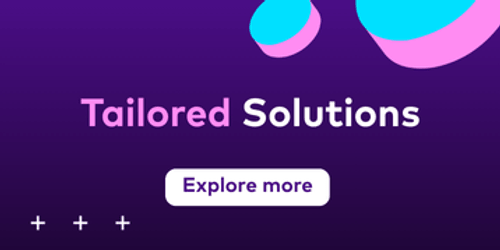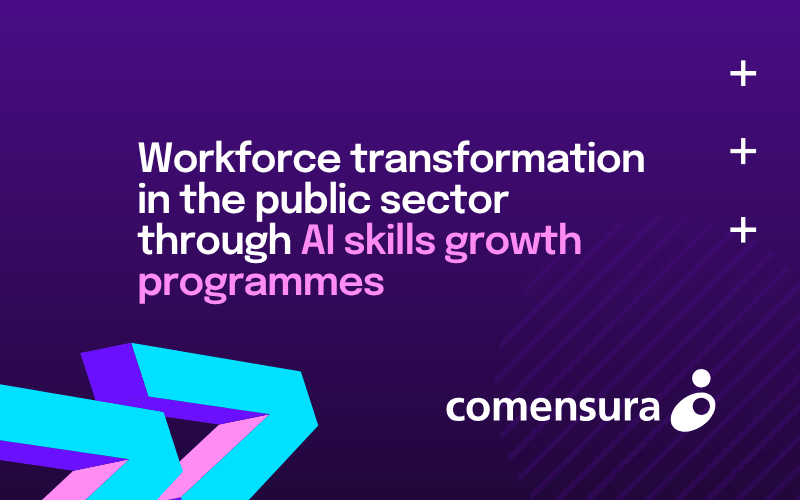

Author
2022-07-27
5 minutes
Have your recruitment processes lost the human touch?
It’s a tad ironic that the recruitment industry, built on the strength of personal relationships, has embraced artificial intelligence (AI) and automation technologies so wholeheartedly.
While staffing firms are not alone in their desire to capitalise on the benefits of new technology, they perhaps have the most to lose by forgetting the value of the human touch.
If you’re struggling to source, engage, and secure the talent you need now, perhaps you could reinvigorate your hiring strategy by humanising the recruitment process once again.
The rise of the robots
Today, 83% of companies share that having access to AI is a top priority in their business plans. This perhaps explains why the global AI market is set to grow to $997.77 billion in 2028, and why PwC forecast that AI has the potential to boost employee productivity by 40% in 2035.
Recent research from the Chartered Institute of Personnel and Development (CIPD), meanwhile, indicates that 25% of business leaders say that technology and automation have already replaced some jobs in their organisation over the last year.
The argument for automation in recruitment
A recent study by Harvard Business School and Accenture found that 75% of employers rely on some form of automated hiring system. Separate research suggests that around two thirds of recruitment professionals use AI in the hiring process.
Used effectively and strategically, recruitment automation technology can:
- introduce efficiencies
- boost candidate engagement
- reduce human error, and
- help to eliminate human bias from the hiring process.
It can also cut out repetitive, mundane, and time-consuming manual work of workforce planning so that recruiters and hiring managers can focus their efforts on higher value tasks.
But despite these apparent advantages, we cannot ignore the fact that AI and automation recruitment technologies also bring challenges. Inbuilt or machine-learned bias, for example, can act as an unfair barrier to some applicants, while viable candidates can be ‘hidden’ from recruiters when algorithms are designed to favour experience over capabilities.
When it comes down to it, machines simply cannot (yet) imitate the neurobiological mechanisms that we as humans exercise innately when working together – and this is why re-humanising the recruitment process is vital.
The value of connections in a post-covid world
For many of us, simple professional activities and human gestures we once took for granted - such as workshopping in a meeting room, discussing strategy over lunch, or greeting a new starter with a handshake - have become either impossible or fraught with uncertainty. For many, the lack of a return to full-time in-person working has given technology an even bigger role in recruitment than it was playing pre-pandemic.
But we are social creatures. Human beings, like most mammals, need personal interactions to live and develop. As Professor James Goodwin, an expert in psychology at Loughborough University and Director of Science and Research Impact at the Brain Health Network, explains, “The brain evolved to be social because it was key to survival… humans on their own would never have survived to where we are now without a group.”
Reduced social interaction - defined as ‘emails, phone calls, letters and nice little thank you notes’ as well as physical contact - has been linked to:
- low levels of interpersonal trust
- a decline in physical health, and
- even premature mortality.
So why are we not taking the opportunity to maximise human interactions with candidates when so many of us are craving them more than ever?
The power of your network
According to Gartner, 78% of recruiters say their ATS helps recruit better and faster. A business’s own applicant tracking system (ATS) is its most effective recruitment channel. Making a personal phone call, or sending tailored messages about specific roles, engages people in a way that impersonal ads or mass mailers never could.
In the age of automation, curating a robust talent pool - and then engaging with these individuals directly - can pay dividends. Have conversations with people who have already expressed an interest in working with your organisation. Truly engage with them, rather than going through a digital process.
Put yourself in the candidate’s shoes. In this talent-scarce market, when they’re being bombarded from all sides with job opportunities, an automated impersonal message sent to 1,000 potential recruits is likely to end up in the digital bin.
On the other hand, an email that says, ‘I like your experience, let’s have a conversation’ is likely to invoke a very different, more human response. There’s nothing wrong with using technology as a tool in these conversations, but the human touch must be central to your strategy.
The benefits of humanising the recruitment process beyond candidate relationships
Beyond candidate engagement, these techniques can also be replicated across the supply chain to build networks, trust, relationships, and loyalty.
Connecting hiring managers directly with agencies, for example, helps them build personal relationships that can help them work together in a more agile and collaborative way further down the line. So too can making a point of having personal interactions with potential clients before bidding for contracts.
If you’re involved in recruitment and procurement, your greatest asset is your ability to communicate - human to human. So why are we so preoccupied with automation and time-saving? You lose something along the way.
The secret to success is deploying technology sparingly to pick up mundane and repetitive tasks, so that talent acquisition professionals have the time they need to leverage their interpersonal skills to truly engage candidates, clients, and partners.
Reducing your reliance on automation and mass communication, and increasing the personal, human touch, will connect you with your audiences at a deeper level than technology alone can reach.
Next steps
Discover how effective workforce planning using real humans as well as cutting edge technology can drive growth, improve efficiency, and ensure you have the right talent for every challenge. Contact Comensura today.
Insights to drive workforce performance
Workforce insights in your inbox
Sign up for our newsletter with the latest workforce management news, insights, analysis and more.
United Kingdom
First Floor, Mulberry House
Parkland Square
750 Capability Green
Luton, LU1 3LU
Australia
Suite 1403
Level 14, 309 Kent Street
Sydney
NSW 2000









